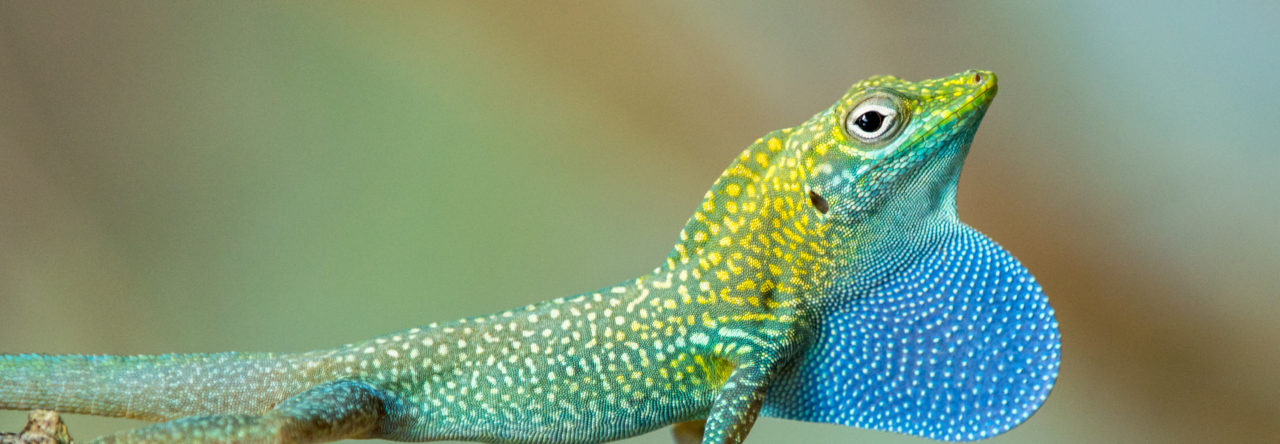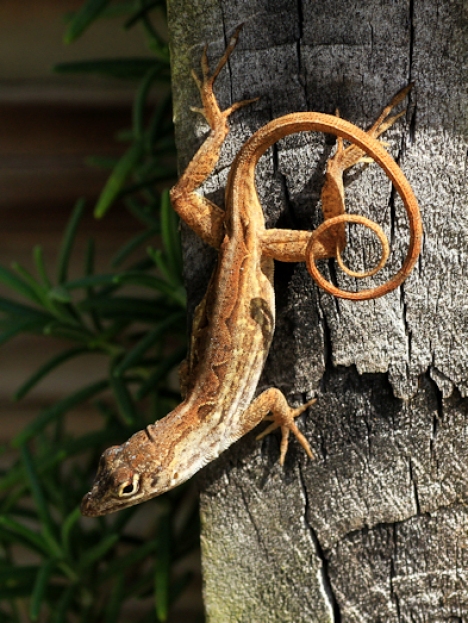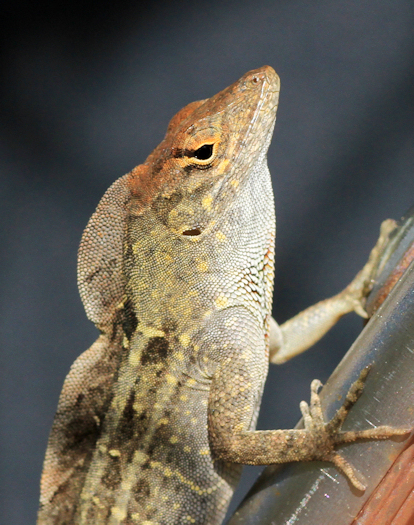
AA is sorry to learn of the passing of Rodolfo Ruibal, an eminent Cuban herpetologist based at UC-Riverside for many years. Rodolfo did important early work on thermal biology andsocial behavior of Caribbean anoles. For example, 1961 paper showed thermoconformity in some lizards (when everyone though that lizards always thermoregulate carefully), it showed that physiology can evolve faster than morphology, and it proposed that only thermoregulators (not thermoconformers) could invade the temp zone.
You can find transcripts from a 1998 interview with Rodolfo as part of a UC-Riverside history project. Here’s the obituary that recently appeared in UCR Today:
Professor Emeritus Rodolfo “Rudy” Ruibal, a founding member of UC Riverside’s Biology department whose passions included lizards, frogs and making beautiful jewelry, died Aug. 30 at the age of 88, just six months after the death of his wife of 68 years, Irene Shamu Ruibal.
“He was instrumental in forging the department in the directions and expertise that form its center now,” said Professor Michael Allen, chair of UCR’s biology department.
Ruibal was a native of Cuba who conducted research in several parts of South America with fellowships from the National Science Foundation and the John Simon Guggenheim Memorial Foundation. He was an early student of temperature regulation in reptiles and amphibians, said friend and colleague Professor Mark Chappell, and was also known for his work with water loss in amphibians and their ability to waterproof their skin by using waxy glandular secretions the animals wipe over themselves.
“He taught the Biology 161 course, on functional vertebrate morphology, or ‘Vert’ to generations of premeds and other life science students, and was renowned for both the clarity of his lectures and for his skill in drawing structures on the blackboard,” said Chappell.
During Ruibal’s 42 years at UCR, he helped establish the Philip Boyd Desert Research Center and spent a year as the acting director of UC MEXUS, created to stimulate teaching and research between California and Mexico. Ruibal also spent a year advising a man he much admired—UC President Clark Kerr—about faculty requests and concerns.
“He always had one faculty member in his office,” Ruibal said during an oral history interview in 1998. “It was his way of simply making sure his faculty were being treated by an academic who knew what the score was, rather than somebody who was just a bureaucrat.”
Ruibal’s life read like a novel. He was born in Cuba on Oct. 27, 1927, an only child who attended the same Jesuit school as Fidel Castro. The budding scientist had an early fascination for animals, said his son, Claude Ruibal of Zurich, Switzerland. Rudy Ruibal’s earliest memories were of watching fish swimming in the waters of Cuba, and chasing lizards in his yard, something his aunt remembered years later, when he returned to Cuba for research on an NSF grant project.
Reptiles and research always fascinated Ruibal, and he excelled at an early age. He enrolled in Harvard when he was just 16 years old, after completing high school at the prestigious McBurney School in Manhattan.
Ruibal took a break from Harvard when he was 18, to serve in the military at the tail end of World War II. But he returned to school a year later and married his wife, Irene, a secretary in the Department of Herpetology in the American Museum of Natural History.
By the time he was 21, Ruibal had finished his BA at Harvard and enrolled at Columbia University for graduate studies in biology. At 26, Ruibal completed his PhD and accepted a position at a new liberal arts college called UC Riverside, where Howard Spieth, one of his former professors at Columbia, had become the chair of the life science’s department, and would later become the university’s first chancellor.
Ruibal began teaching in the fall of 1954, the second semester for a school so new that it had no landscaping or trees. Their son was born the following year, in 1955. Claude Ruibal said his parents were loving but not overbearing. His father, he said, “was a thoughtful guy, a moral guy—very rational and not very emotional. I don’t think I ever heard my parents argue.”
His mother loved to cook and throw dinner parties, and they cultivated a diverse group of close friends—artists, business people, even the publisher of the newspaper. His father loved tennis, playing into his 80s, and did a lot of reading about history and politics.
Ruibal also was a noted local artist. Shortly after he arrived in Riverside, he successfully lobbied the Riverside Art Museum to have real nude models available for sketching (instead of women in bathing suits). He later branched into candle making, ceramics —complete with his own kiln—and finally, making brass and silver jewelry, which were top sellers at the Riverside Art Museum, Mission Inn Museum and other locations.









 We do know why they raise their dorsal crests–to look fearsome, as this mini-dinosaur does. How they do it, though, is another matter, when discussed previously in these pages (
We do know why they raise their dorsal crests–to look fearsome, as this mini-dinosaur does. How they do it, though, is another matter, when discussed previously in these pages (
















